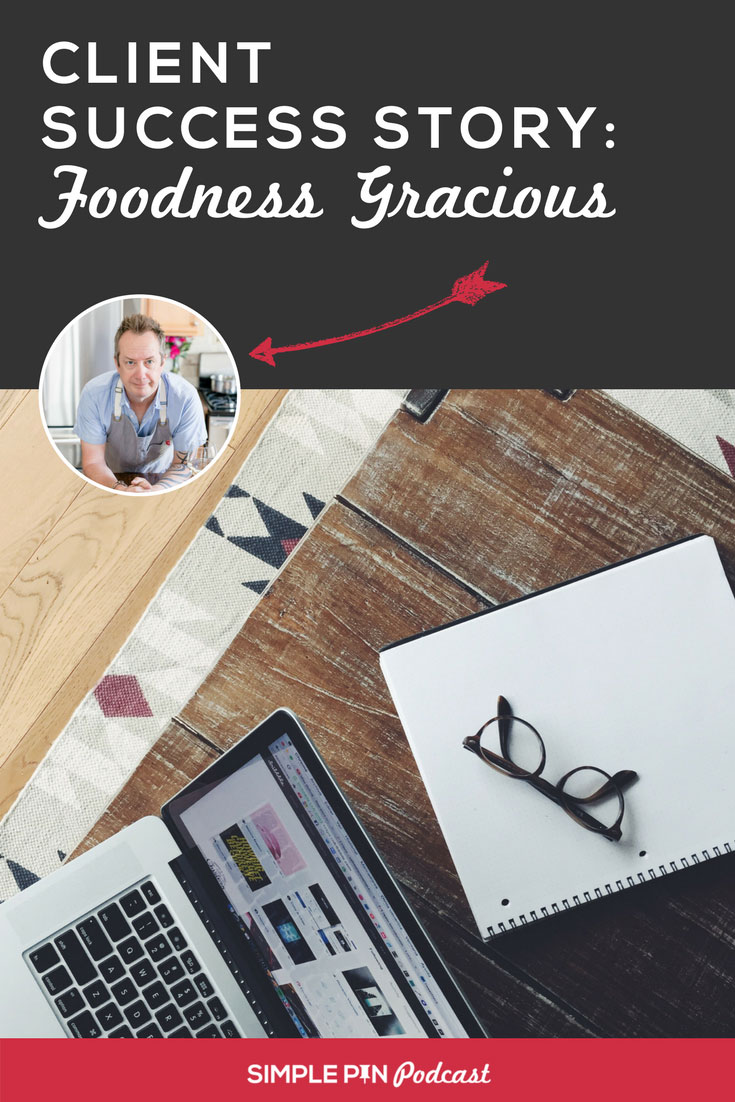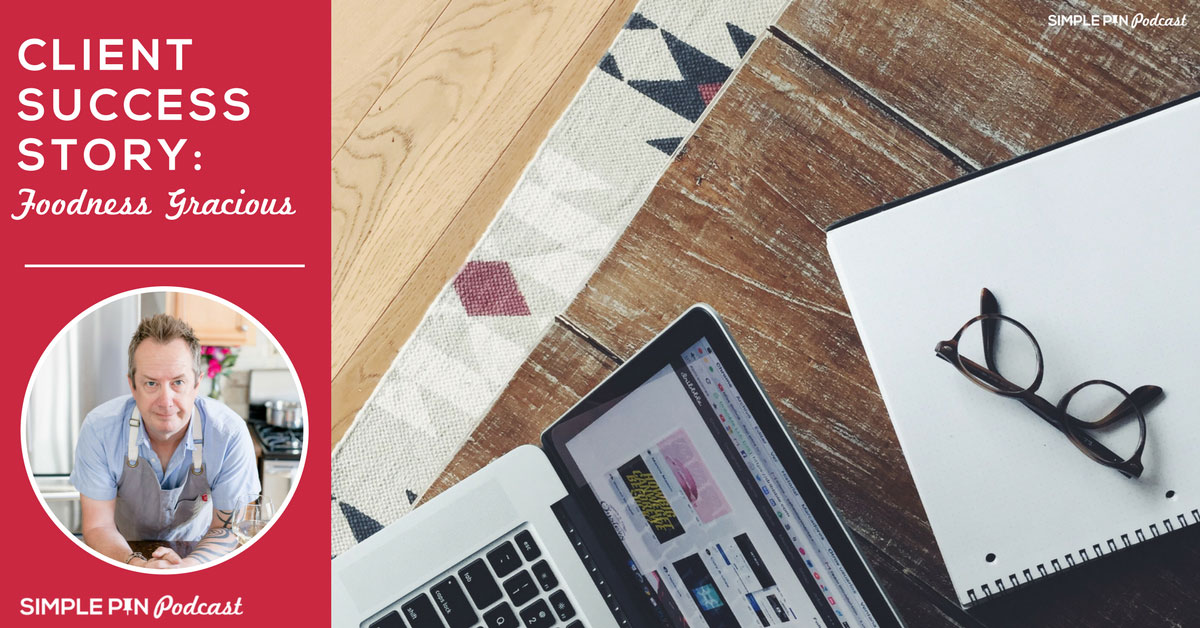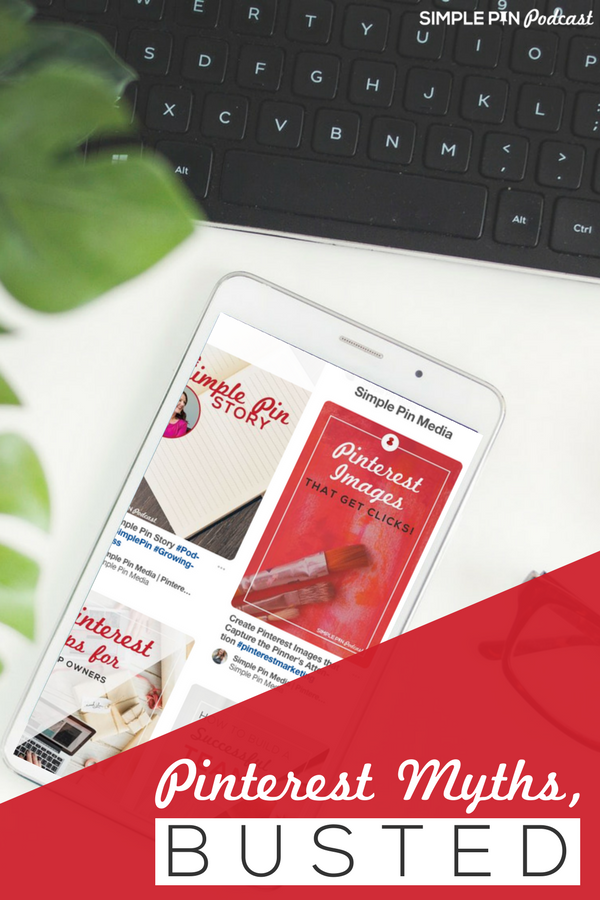Today’s post has a dual purpose: I’m sharing a client success story AND having the client share his awesome food photography tips that enable effective visual storytelling on Pinterest.
Client Success Story: Foodness Gracious
Gerry Speirs has been a client of Simple Pin for a year now and blogs at Foodness Gracious. Gerry is a stay-at-home dad and his blog is all about creating easy, healthy meals for busy parents. He’s a former baker and pastry chef, so he also shares plenty of indulgent dishes as well. He started blogging six years ago as a hobby. It wasn’t until about three years in that he decided to monetize his blog by putting up ads on his site sidebar.
Gerry sought out Simple Pin’s services because he knew that Pinterest brought a large percentage of traffic to his site. He knew he couldn’t pin as consistently as he needed to and would miss days of pinning because of his busy schedule. It wasn’t long before he was feeling overwhelmed.
This post contains affiliate links, which means if you make a purchase through these links, I may receive a small commission at no extra cost to you. Click here to read my full disclosure policy.
Managing the Foodness Gracious Pinterest Account
I asked Gerry’s account specialist, Leslie, to share some of her observations from over the last year to give you a sneak peek at how we strategize here at Simple Pin. She noted that Gerry had his biggest Easter and St. Patrick’s Day holiday season yet since using Simple Pin.
In February, Leslie removed Foodness Gracious from 12 underperforming group boards and added three more niche specific inside boards. She also added Foodness Gracious to four of our Simple Pin network group boards. Leslie also deleted some underperforming contributors from a Tasty recipes board that Gerry manages. She regularly pins the posts that generate the highest level of traffic to the blog (based on Google Analytics). In addition, she regularly pins new content that Gerry is creates.
Content Creation Schedule
Gerry cooks up to three recipes a day, whether it’s for the blog or for a brand. Gerry posts about twice a week, usually on Sunday night and then later in the week. Because he has been blogging for so long and has such a large backlog, he’s able to relax some and not post as often. This also gives him time to revitalize and optimize some of his old posts that are doing well but need some love.
Nailing Down His Avatar
Leslie described Gerry’s main audience as:
…the young, higher-end, hipster couple with kids, which is awesome, but maybe they aren’t spending as much time on Pinterest because they’re busy. They love good quality fresh food and I’m guessing they love to entertain.
A few years ago, Gerry wouldn’t have agreed with this avatar description, but now he definitely does.
Learning about your avatar helps your growth because it enables you to focus on that specific audience and target exactly what they’re looking for with content creation. You’re not just throwing darts in the air.
Visual Storytelling on Pinterest: Gerry’s Food Photography Tips
A couple of weeks ago, I crossed paths with Gerry at the Indulge Conference. I listened in as he dropped several pearls of wisdom as he led a conference session on food photography. One pearl of wisdom that really resonated with me was his recommendation to tell a story through your food photography.
Viewing his food photography as a story has evolved over time and it happened naturally. Gerry could make a recipe, take multiple pictures of the finished product, put it on the blog and be happy with it. But as he was making recipes, he began to take more notice of the recipe ingredients and started posting pictures of these “raw elements” as well. Over time, the raw ingredients become part of the story, whether it was eggs, flour, or a pretty head of romaine lettuce.
The final dish might just be one image at the bottom of the post, but the pictures of the ingredients tell the story of how he arrived at the final dish. We’ve noticed that on Pinterest when the pinner can see ingredients in the image, they make a deeper connection with the recipe. It draws them in even more when they know they have those ingredients in their fridge and can easily replicate that recipe in their own home.
Photography Equipment
Gerry doesn’t use a lot of equipment. He’s taken some photography workshops and noticed that even those photographers don’t use much equipment. It’s all about the lighting and the angle.
He uses a Canon EOS 6D along with a 100 mm macro lens. His only other lens is a 24-70 mm and he uses that as a general lens to shoot outside. He uses a tripod, a piece of equipment that he highly recommends because it eliminates the camera shake that can happen when you’re holding a camera.
Gerry doesn’t want to spend a lot of money on equipment. You will have to spend SOME money to take the next step and improve your photography, but you don’t need to be selective about what you spend your photography budget on. Gerry recommends buying a nice lens or a tripod. In his opinion, these two pieces of equipment are the ones that will deliver the most return on investment.
Using Props and Eliminating Clutter
The props that Gerry uses in his images are not things he uses every day. He has a cupboard in his garage that he uses to store his props. He doesn’t own a lot of props. About once a month, he checks out some garage sales or antique stores to seek out unique items that might be useful during photo shoots. He likes to add in things like a glass of wine or some silverware.
Overall, Gerry doesn’t want a bunch of clutter to distract from what the post is actually about. He likes to let his food do the talking.
Taking Action Shots
In the class that Gerry was teaching at Indulge, he was pouring a glass of champagne and everyone wanted to know how he gets such amazing action shots. He shared that his camera is tethered to his computer so that he can see the images as they’re being taken. (He highly recommends getting a tether cable. You can find them on Amazon for cheap).
If he wants to do an action shot, he gets his focus point set, puts his computer on the floor, and by using the Canon EOS Utility Software, he can take a picture by tapping the mousepad on his laptop with his foot as he’s pouring. It’s a little strange but it works! As long as your camera is focused well, you’ll get a great image.
Last Minute Tips
If you’re just starting out in the food blogging industry and are feeling overwhelmed, Gerry encourages you to just keep moving forward. Don’t expect too much too soon. There’s a lot more information available now than there was when Gerry first started blogging. Make blog friends and ask them questions. Above all else, make sure you are doing it because you enjoy it, not because you feel obligated to do it.
Currently, Gerry is working on a brand restructure and a new site design for Foodness Gracious. He’s trying to make it more of a family lifestyle blog, more like a magazine, and less solely focused on food. He’s experienced great growth in the last six years and it’s been an adventure as he’s transitioned the blog from a hobby into a job that he loves.
Time Stamp:
Intro
1:40 – Foodness Gracious
5:30 – Managing Foodness Gracious’s Pinterest Account
8:28 – Nailing Down his Avatar
10:00 – Viewing Food Photography As a Story
13:18 – Photography Equipment
16:35 – Using Props and Eliminating Clutter
19:45 – Taking Action Shots
24:01 – Last Minute Tips
Interested in learning more from our Simple Pin clients and hearing about their Pinterest success stories? Be sure to check out these posts:
Use Gift Guides to Create Passive Income with Angela of Frugal Living NW
Affiliate Marketing Tips and Strategies with Michelle of Making Sense of Cents
Long-Term Results on Pinterest: Why Patience is Vital with Melissa of Bless This Mess
Creating Images that Capture the Pinner’s Attention with Cassie of Wholefully
Pinterest Marketing for Food Bloggers with Lauren of Six Sisters Stuff










3 Comments